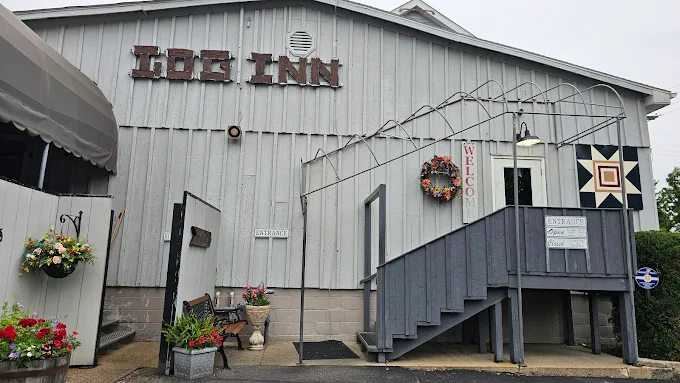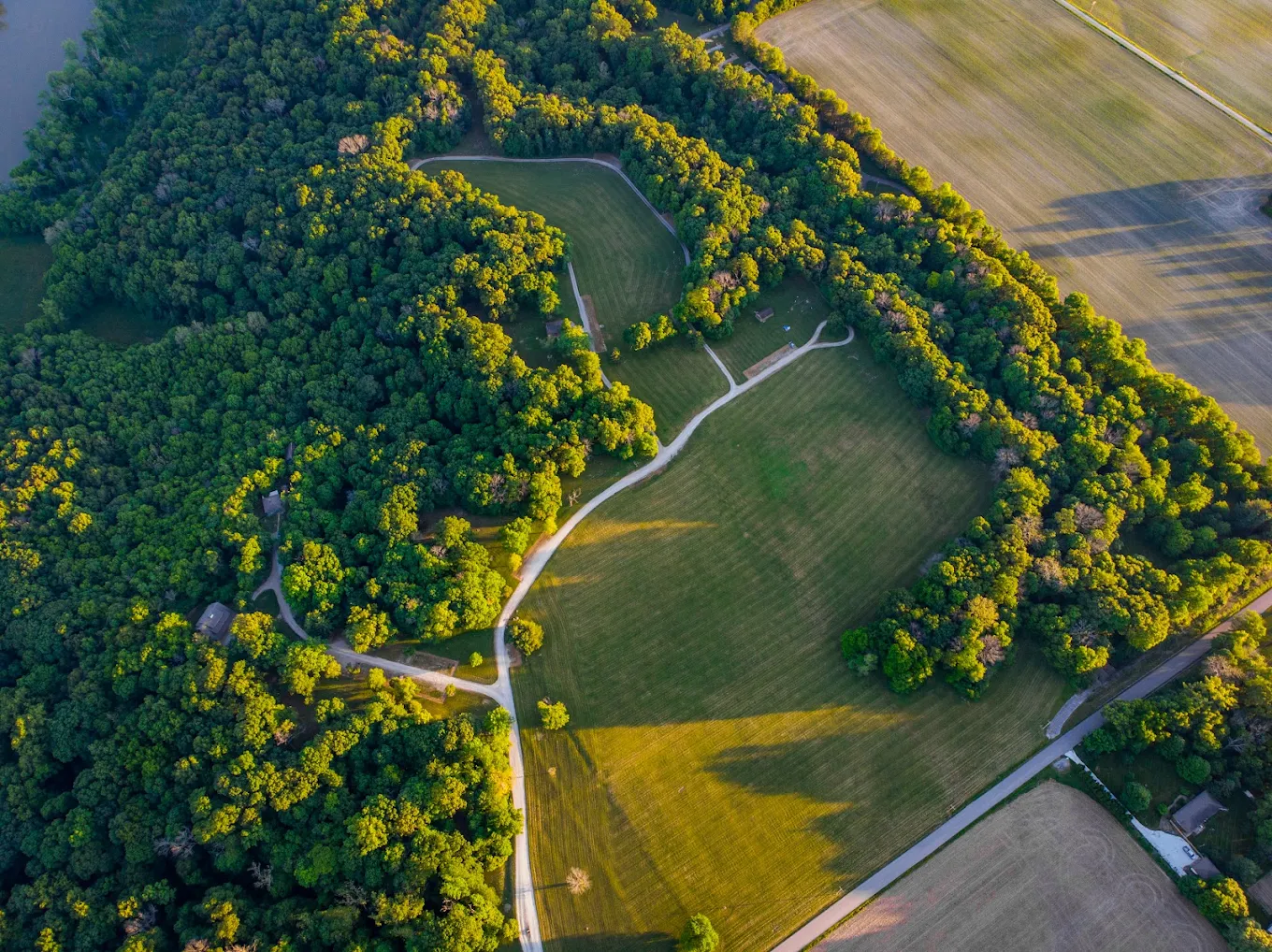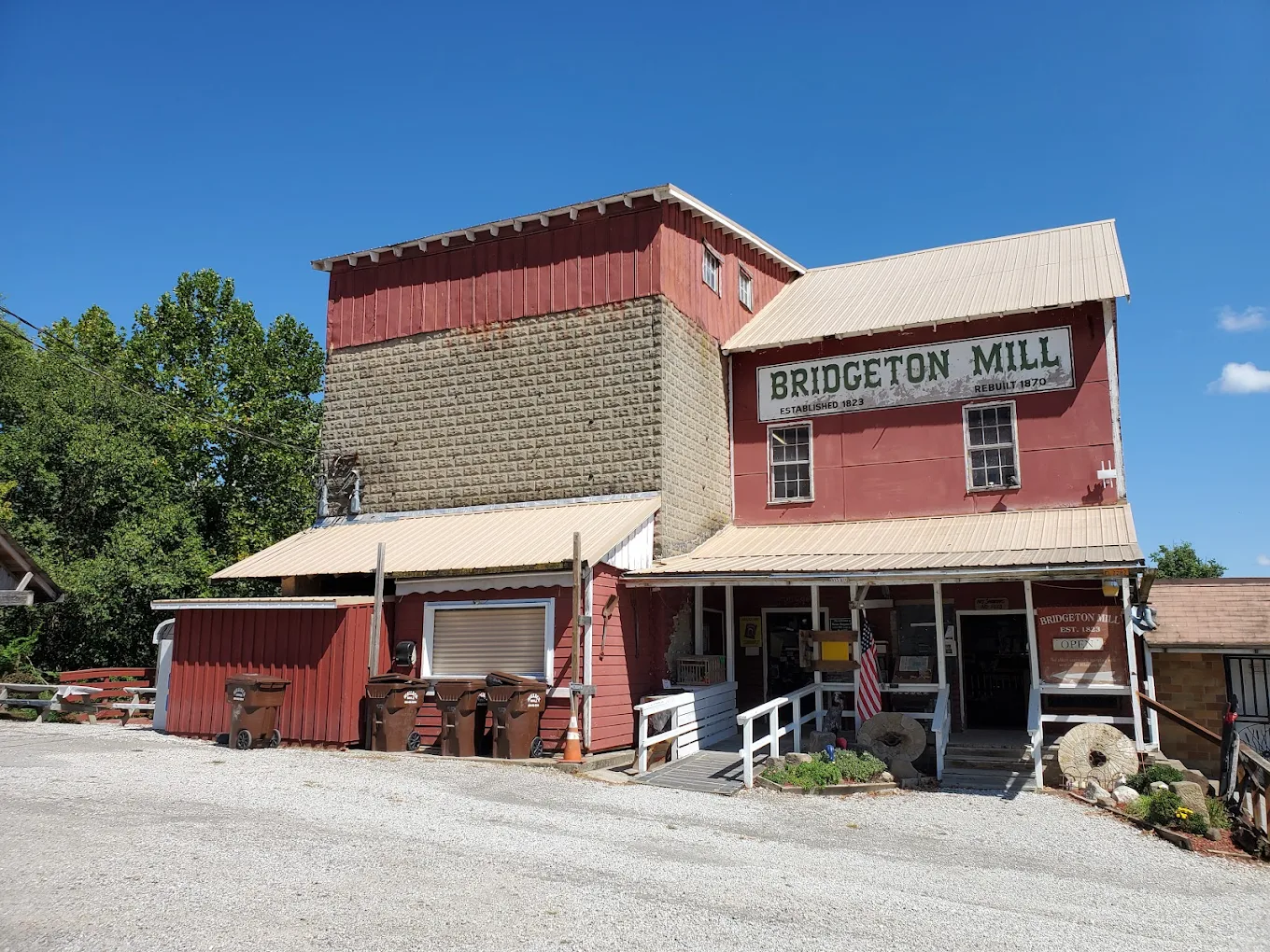A Slice of the Great Plains in Indiana
In the northwestern corner of Indiana, an extraordinary conservation success story unfolds across thousands of acres of restored prairie landscape. Kankakee Sands, located near Morocco, represents one of the most ambitious habitat restoration projects in the Midwest, transforming former agricultural land back into the native prairie ecosystem that once covered much of the region. The preserve’s crown jewel is its free-roaming bison herd, offering visitors a rare opportunity to witness these magnificent creatures in their natural prairie habitat.
The Vision Behind the Restoration
Kankakee Sands began as an ambitious vision to recreate the prairie ecosystem that once dominated this landscape. The Nature Conservancy, working with local partners and supporters, recognized that this area possessed the ideal conditions for prairie restoration: appropriate soil types, favorable topography, and sufficient acreage to support a functioning ecosystem. The project represents decades of careful planning, scientific research, and dedicated conservation work.
The restoration process involved removing non-native vegetation, reestablishing native plant species, and reintroducing the natural processes that maintained these ecosystems for thousands of years. This comprehensive approach goes beyond simple habitat creation, focusing instead on rebuilding the complex relationships between plants, animals, and environmental conditions that define healthy prairie systems.
The Return of the Bison
The introduction of bison to Kankakee Sands marked a historic moment for Indiana conservation. These magnificent animals, which once roamed across the Great Plains in vast herds, had been absent from Indiana for more than 150 years. The carefully selected herd was introduced not merely as a tourist attraction, but as an essential component of prairie ecosystem function.
Bison serve as ecosystem engineers, their grazing patterns, wallowing behavior, and movement across the landscape helping to maintain prairie plant diversity and structure. Their presence has already begun to influence vegetation patterns, creating the mosaic of habitats that supports a wide variety of prairie wildlife species. The herd continues to grow naturally, representing a self-sustaining population that requires minimal human intervention.
Prairie Restoration in Action
The preserve showcases prairie restoration on a scale rarely seen in the Midwest. Visitors can observe the transformation from former agricultural fields to thriving native grasslands supporting hundreds of plant species. The restoration process involves careful seed collection, propagation of native plants, and controlled burning that mimics the natural fire cycles that maintained these ecosystems.
Different areas of the preserve represent various stages of restoration, allowing visitors to see how prairie landscapes develop over time. Young restorations feature pioneering prairie plants, while older areas showcase the complex plant communities that characterize mature prairie systems. This diversity creates a living laboratory for understanding prairie ecology and restoration techniques.
Wildlife Beyond the Bison
While bison serve as the preserve’s flagship species, Kankakee Sands supports an impressive diversity of wildlife that has returned as prairie habitat has been restored. Bird species that depend on grassland habitats, including bobolinks, sedge wrens, and various sparrow species, have established breeding populations. Raptors such as northern harriers and short-eared owls hunt across the open landscape.
The preserve’s wetlands and streams support waterfowl, amphibians, and aquatic species, while the diverse plant communities provide habitat for numerous butterfly and moth species. Large mammals including deer, coyotes, and various small mammal species have also colonized the restored habitats, creating a complex web of predator-prey relationships.
Seasonal Experiences and Wildlife Viewing
Each season offers unique opportunities for wildlife observation and prairie appreciation. Spring brings the emergence of early wildflowers and the return of migratory bird species. Summer showcases the full diversity of prairie plants in bloom, creating spectacular displays of native flowers. Fall offers dramatic grass seed heads and the movement of migrating species, while winter provides opportunities to observe how prairie wildlife adapts to harsh conditions.
The preserve maintains viewing areas and trails that allow visitors to observe wildlife while minimizing disturbance to the animals and their habitat. Educational signage and interpretive materials help visitors understand what they’re seeing and appreciate the complexity of prairie ecosystems. Guided tours and educational programs provide deeper insights into restoration ecology and conservation biology.
Conservation Education and Research
Kankakee Sands serves as more than a tourist destination; it functions as a living classroom and research facility. The preserve hosts educational programs for schools, universities, and community groups, demonstrating prairie ecology principles and conservation practices. Students and researchers conduct studies on everything from plant community dynamics to wildlife behavior, contributing to our understanding of restoration ecology.
The preserve’s management practices serve as models for similar restoration projects throughout the Midwest. Techniques developed and refined at Kankakee Sands have been applied to other restoration sites, multiplying the conservation impact beyond the preserve’s boundaries.
Planning Your Visit
Kankakee Sands welcomes visitors year-round, though different seasons offer varying experiences and wildlife viewing opportunities. The preserve provides maps and information to help visitors navigate the trail system and locate the best viewing areas for bison and other wildlife. Photography is encouraged, though visitors are reminded to maintain safe distances from all wildlife, especially the bison.
The preserve’s location makes it accessible for day trips from Chicago, Indianapolis, and other regional cities. Facilities include parking areas, restrooms, and picnic areas, though visitors should come prepared for outdoor conditions and changing weather. The flat terrain and well-maintained trails make the preserve accessible to visitors with varying levels of mobility.
Whether you’re interested in wildlife photography, prairie ecology, or simply experiencing a landscape that once covered millions of acres across the Midwest, Kankakee Sands offers an unforgettable glimpse into Indiana’s natural heritage and the power of dedicated conservation efforts.




